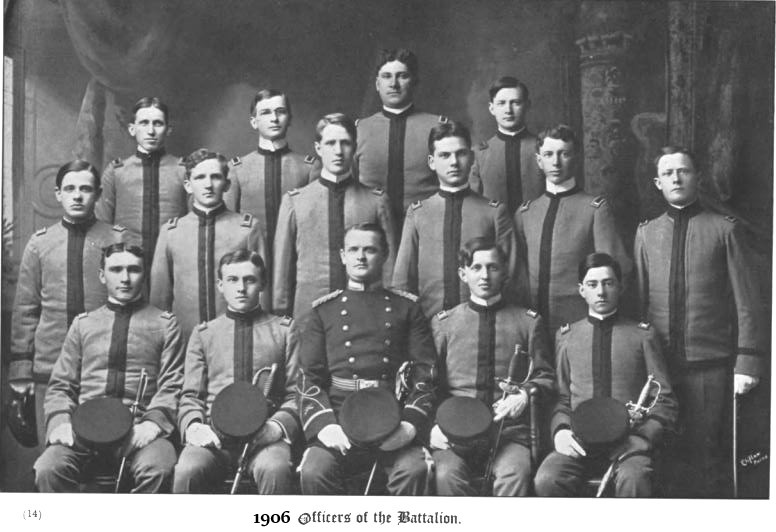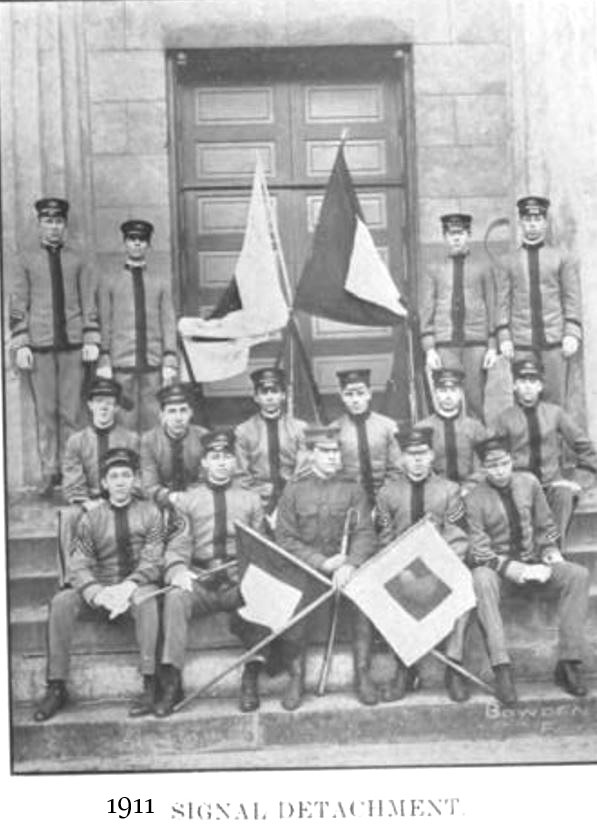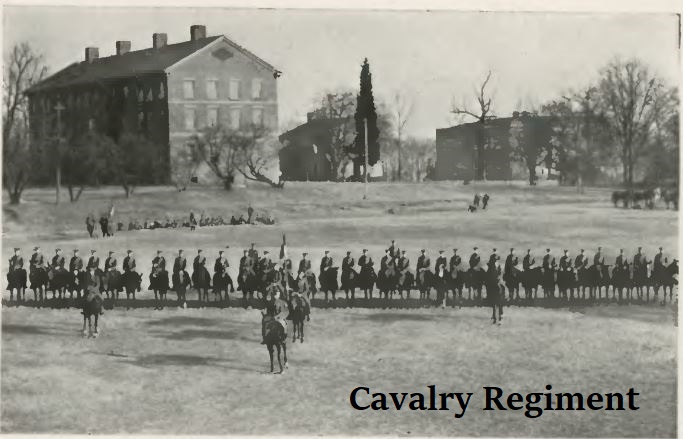
Military training began in 1807 at the University of Georgia because of a state law requiring all able-bodied men, students and faculty, to participate in state musters. These musters eventually led to the organization of military companies by the students. The first were known as the “College Riflemen” and the “Franklin Blues”. These student companies participated in the War of 1812 and the Seminole War of 1817-1818. Later, another company known as the “College Volunteers” participated in the Texas struggle for independence in the 1830s.
 During the Civil War, students organized units such as the “Mell Rifles” and the “Lipscomb Volunteers.” These groups, later called the “Rock Boys” from Athens, joined the war effort in 1863. Students deemed unfit for combat formed the “Mitchell Thunderbolts,” who conducted drills and guarded prisoners.
During the Civil War, students organized units such as the “Mell Rifles” and the “Lipscomb Volunteers.” These groups, later called the “Rock Boys” from Athens, joined the war effort in 1863. Students deemed unfit for combat formed the “Mitchell Thunderbolts,” who conducted drills and guarded prisoners.
In 1872, UGA established a Department of Military Science and Tactics, making military instruction a required part of the curriculum. A designated professor served as commandant of cadets. Due to this military unit’s establishment, UGA qualified for the Morrill Land Grant, which became a principal source of income for the University.
By 1904, advanced students began attending summer training camps where military discipline and training could be more thoroughly taught than in a college atmosphere. In 1905, UGA petitioned for and received a regular Army officer as commandant of cadets. Between 1871 and 1919, students participated in three drills per week, with federal aid providing funding and equipment for military training.
 During American participation in the First World War, 1917-1918, the University was organized as a strictly military school, with primary emphasis given to military training rather than academic education. The 1917 senior class volunteered for action in World War I before the completion of the year’s work. By special action of the Board of Trustees, these students were able to receive their degrees early. They received their diplomas wearing olive-drab uniforms instead of the usual academic cap and gown as a symbol of their enlistment for service. The 1918 Pandora (UGA’s Yearbook) is bound in an olive-drab cover as a dedication to these students. There were 3152 Georgia graduates who participated in World War I, almost half were officers. Of those, 46 lost their lives. Following the war, Georgia alumni created War Memorial Fund. With these funds, Memorial Hall was built and in 1924 it was dedicated to the Georgia men who gave their lives during World War I.
During American participation in the First World War, 1917-1918, the University was organized as a strictly military school, with primary emphasis given to military training rather than academic education. The 1917 senior class volunteered for action in World War I before the completion of the year’s work. By special action of the Board of Trustees, these students were able to receive their degrees early. They received their diplomas wearing olive-drab uniforms instead of the usual academic cap and gown as a symbol of their enlistment for service. The 1918 Pandora (UGA’s Yearbook) is bound in an olive-drab cover as a dedication to these students. There were 3152 Georgia graduates who participated in World War I, almost half were officers. Of those, 46 lost their lives. Following the war, Georgia alumni created War Memorial Fund. With these funds, Memorial Hall was built and in 1924 it was dedicated to the Georgia men who gave their lives during World War I.